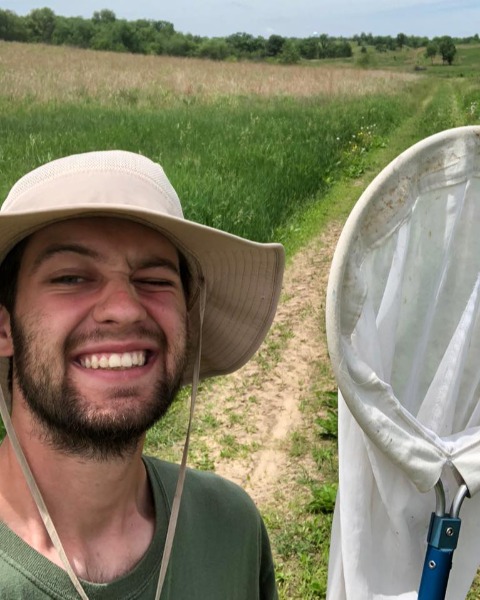SysEB
Student Competition 10-Minute Paper
A look into the diversity and abundance of nesting bees and wasps (Aculeata) found in bison wallows

Josh Paul Klostermann
University of Missouri
Columbia, Missouri
Bethanne Bruninga-Socolar
Albright College
Reading, Pennsylvania
Sean R. Griffin
University of Texas at Austin
Austin, Texas
Chandler Dolan
Lisbon, IA
Presenting Author(s)
Co-Author(s)
The American bison (Bison bison) historically played a major role in shaping the landscape structure and function of tallgrass prairie. These large mammals are particularly known for their wallowing behavior, in which they create small to relatively large patches of exposed sandy soils (wallows) across the landscape in spaces that were once covered by vegetation. Many insect groups use exposed sandy soil in tallgrass prairie for nesting, but whether bison wallows provide nesting habitat for diverse insects remains unknown. Because restoration efforts for insect pollinators often focus on re-establishing floral diversity without consideration for nesting habitat, it is important to understand whether open, bare, spaces like bison wallows are important drivers of bee and wasp diversity and abundance in prairie habitats. This summer I surveyed 20 active wallows created by re-introduced bison in restored tall-grass prairie at Nachusa Grasslands Preserve in Franklin Grove, Illinois. During these surveys, I counted the number of nesting bees and wasps I observed within a 15 minute period followed by, one hour of hand netting nesting and non-nesting specimens for identification. I conducted once in each wallow during August 2020 - September 2020. On average, I found 8 nesting individuals per 15-minute nesting observation survey, with a range of 3-20 individuals. Our study provides new insight into the diversity and nesting behavior of bees and wasps in these re-introduced, actively disturbed spaces and provides evidence for the importance of considering bare ground in grassland restoration efforts.


